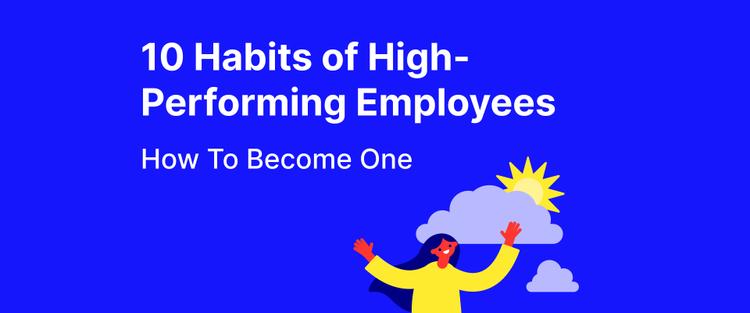Did you know that 77% of remote workers say they’re more productive when working from home, yet nearly half still struggle with staying focused? Whether you're already working remotely or just thinking about making the switch, it’s clear that productivity doesn’t automatically come with a home office setup.
Maybe your motivation has dipped, or you’re wondering if the remote job is even the right fit. Perhaps you’ve got the basics down but want to fine-tune your focus and time management. Whatever the case, this guide will give you the practical tools and insights you need to master the art of working at home—and make every workday count.
What you’ll learn in this article:
How to create a productive work-from-home routine
Simple ways to organize your workspace
How to avoid distractions and master deep work
What companies like GM and Ford can teach us about remote success
FAQs about finding, keeping, and thriving in remote jobs
How to work from home: A step-by-step plan
We analyzed the latest research data and expert insights from Laura Vanderkam ('The New Corner Office'), Clea Shearer ('The Home Edit Life'), Cal Newport ('Deep Work'), and other professionals to help you improve your remote work experience.
We hope you'll find inspiration in the examples of real people and companies that embraced remote work successfully. Besides, we prepared a few useful tools to help you increase your productivity at home. Let's dive in.
Step 1. Organize your home office
"There's never enough time to organize our clutter," Clea Shearer admits in her book 'The Home Edit Life.' Together with Joanna Teplin, she insists that everyone can become organized even if self-organization is not their brightest gift.
Some people may disagree: "I tried stepping out of my comfort zone, but my slippers wouldn't let me," or "They say life begins outside your comfort zone. I guess I'm still waiting to be born."
Good news! If you say you are unorganized and find it difficult to put things in order, Clea has an idea: learn from children. They are not afraid to step out of their comfort zone.
"Starting small and working your way up is the best way to ensure a successfully organized space," the founders of The Home Edit company, Clear Shearer and Joanna Teplin, emphasize in 'Home Edit Life.'
What the experts advise:
Categorize your workspace. Keep essential work items like pens, notebooks, and chargers in designated spaces. Clear your desk daily to minimize clutter and help you feel more in control.
Lighting and ergonomics. Invest in good lighting and ergonomic furniture. A comfortable chair, a spacious desk, and natural light can make a world of difference in your focus and energy levels.
Everything is exactly where it should be. Create a work zone where you can quickly grab a pen or charger without wasting time looking for it. The sense of order reduces stress, allowing you to focus fully on your work.

How organizing the workspace works for businesses
Did you know that the automotive giant General Motors (GM) exemplifies this principle? Under CEO Mary Barra's leadership, GM introduced a "Work appropriately" approach, where employees tailor their work environments to maximize productivity.
"This means that where the work permits, employees have the flexibility to work where they can have the greatest impact on achieving our goals,” Barra said in her LinkedIn post.
Interestingly, the company's market value grew from approximately $47.79 billion in December 2022 to about $57.26 billion in October 2024 (a growth index of around 1.2). As you can see, the "Work appropriately" principle worked for General Motors. How can you apply it in your life?
Step 2. Establish a clear routine
With an organized home workspace, let's move to the next aspect of increasing your productivity — your routine. Here is what experts say about it:
Laura Vanderkam's time-blocking strategy
In her bestseller 'The New Corner Office,' Vanderkam suggests planning your day in blocks dedicated to specific tasks. This "time-blocking" strategy will help you focus on what matters most and avoid the trap of multitasking.
Specifically, Vanderkam encourages setting morning hours for deep, focused work and having meetings in the afternoon.
The Pomodoro technique
Francesco Cirillo's 1980s Pomodoro technique aligns with Vanderkam's ideas. This technique is so effective that even Cal Newport mentions it in his book 'Deep Work.'
So, let's find out what "the Pomodoro technique" is all about.
Why "pomodoro"(not "potato" or "kiwi," for example)? Fun fact! Francesco Cirillo used a tomato-shaped kitchen timer when he developed the technique. ("Pomodoro" means "tomato" in Italian.)
How does it work? It's a time management technique that works in focused intervals to maintain concentration. The pattern typically blocks 25 minutes for work, followed by 5-minute breaks.
Three big tasks example. How does it work?
Let's say you have three big tasks to complete: writing a report, preparing a presentation, and analyzing data. You block out 9 a.m. to 11 a.m. for deep work and focus entirely on writing the report. If you haven’t finished the report by 11 a.m., you'll still have made significant progress. The key is dedicating uninterrupted time to make meaningful headway on each task.
How do businesses apply it?
Under CEO Jim Farley, Ford Motor Company has adopted a flexible hybrid work model to help staff remain productive remotely while fostering teamwork. Employees who don't need to be on-site can choose to work from home and come into the office for necessary collaboration or in-person meetings.
Ford reported $136.3 billion in revenue in 2023, partly attributed to this adaptable work model. According to Statista, this strategy has contributed to Ford's financial growth, with revenue increasing from $136.3 billion in 2021 to $176.2 billion in 2023 (a growth index of approx. 1.29.)
At first glance, these " simple" tools have proven effective for companies like Ford and General Motors, as we discussed earlier. However, working from home requires both Laura Vanderkam's principles of deep focus and Cal Newport's anti-distraction ideas — we'll explore those next.
3. Minimize distractions and stay focused
"It is counterproductive to work in a semi-distracted state," renowned computer science professor and author of 'The Deep Work', Cal Newport warns. Staying focused is one of the biggest hurdles when working from home.
In his bestseller, Newport introduces "attention residue." When one switches from task A to task B, 100% of their attention does not automatically go to the new task. Some of that attention remains stuck on the original assignment. He calls this leftover focus "attention residue.". Some people remain stuck at the original assignment. This is "attention residue," he explains.
What are other examples?
Let's revisit the three big tasks from our Pomodoro technique explanation — writing a report, preparing a presentation, and analyzing data. What if you tried to demonstrate your fascinating "multitasking ability"?

You would likely " jump" from one task to another and lose focus, energy, and productivity. That's a typical attention residue, according to Newport.
Newport's optimum productivity level
Newport concludes: if you want to perform at optimum productivity, work on a single task for long periods, with total concentration and zero distraction — work deeply.
Cal Newport’s Four commandments
Work deeply; focus on the in-depth part of a task without distractions.
Embrace boredom.
Quit social media.
Drain the shallows.
Newport defines working deeply as concentrating on the in-depth part of a task without distractions. In other words, deep work is focused work within a given period of time.
So, "accept boredom and quit social media" during work hours is quite clear, right? But what "shallows" does Newport want us to "drain"?
"Draining the shallows" means not replacing real (often difficult) work with easy, "shallow" activities, such as attending meetings, making phone calls, answering emails, and other low-value tasks.
What are the "deep work strategies" Newport suggests?
Dedicating years of his life to researching work productivity, Professor Newport developed the following strategies.
Schedule deep work sessions
Dedicate specific hours to deep work, where you fully immerse yourself in complex tasks. Use digital tools to block social media and silence unnecessary notifications.
2 Create rituals
Before starting a deep work session, establish rituals like putting your phone on silent and turning on focus-friendly music to signal your brain that it's time to concentrate.

3 Consider impact
Imagine you're writing an important proposal and decide to dedicate ninety minutes of deep work to it. You close all unnecessary tabs, put on noise-canceling headphones, and start your distraction-free work. Guess what! You'll finish ahead of schedule and feel a huge sense of accomplishment.
How does it work for businesses?
Under CEO Arvind Krishna, IBM has long supported remote work. In 2023, the company encouraged in-office work to boost collaboration. Nevertheless, it still emphasized the importance of focused, undisturbed work sessions to maintain high performance.
We can clearly see Cal Newport's "deep work" principles working well for IBM. According to CompaniesMarketCap, IBM's market capitalization was approximately $213.15 billion as of October 2024. Over the last five years, it has nearly doubled its market value. Can you imagine what would happen if you applied Newport's deep work approach in your life?
4. Craft your own work-life balance
So much has been said about "work-life balance" by so many experts that people often joke about it:
Work-life balance is like a unicorn. Everyone talks about it, but no one has ever seen it.
Work-life balance: work less, complain more.
My work-life balance is perfect: I'm equally stressed at work and at home.
I used to have a work-life balance, but then I got a job.
I quit my job. Now, my life is perfectly balanced between Netflix and napping.
They say to keep work and life balanced, so I equally ignore both
As funny as jokes are, life is not a joke when the balance between work and home is unequal. Let's see what researchers say about it.
Shocking facts about the latest burnout tendencies
According to the American Psychological Association, 77% of workers experienced work-related stress in 2023, with 57% reporting negative effects like emotional exhaustion and decreased motivation. Physical fatigue has also risen significantly, with 44% of employees experiencing burnout-related symptoms, a 38% increase since 2019.
While corporate employees face high stress and burnout rates, a remote position comes with its own challenges. According to a 2023 ThinkRemote report, 86% of remote workers experience burnout, with over half working more hours virtually than they did in the office.

So, what does all this mean for you? Now that you know the benefits and potential obstacles of working remotely, you can craft your own method or use the strategies and tips we explored in this article. Just remember, as a remote worker or someone considering it, it’s critical to identify possible distractions and set boundaries. Separate work from personal life. Finally, implement the "shutdown ritual" explained in the next section.
Use shutdown rituals to mentally log off
'The New Corner Office' recommends creating a daily shutdown ritual to signal the end of the workday.
Design a daily shutdown ritual. Find a simple way to wrap up your workday. Shut your laptop or take a walk. Do something that will let your brain know you're done working for the day.
Use physical cues. If possible, set up a workspace that you can leave at the end of the day. If space is limited, pack up your work materials at the end of the day to mentally separate work and home life.
Picture this: you finish work at 5 p.m., shut down your laptop, and head outside for a 20-minute walk. This simple routine helps you mentally disconnect from work, so you're more present with your family in the evening.
As Laura Vanderkam says in 'The New Corner Office,' "The beauty of remote work is that you can create rituals that work for your life, not just your employer's."
It appears we have uncovered another perk of remote working! You can set work hours that make sense to you and have a simple end-of-day routine to separate work from home life.
Work-life balance works
Under CEO Jane Fraser's leadership, Citigroup (with revenues of $71.9 billion in 2023) developed a new approach to work-life balance. This financial corporation adopted a hybrid work model, requiring employees to work in the office three days a week and remotely for two.
In your case, working from home offers you all of the benefits of remote work. As long as you have a strategy in place and follow it purposefully, you will succeed.
Next up: taking care of your health. Keeping your physical and mental shape is a must when working from home. So, let's dive into ways to stay energized.

5. Prioritize your health and well-being
Working from home can be draining if you don't care for your physical and mental health. Integrating a few simple habits into your daily routine will keep you energized, happy, and productive.
Simple habits to improve your health and well-being:
Exercise regularly. A short workout or a brisk walk can do wonders for your energy levels and mental clarity. Even a 10-minute stretching routine between tasks can improve your mood and concentration.
Practice mindfulness. Start your next day with a five-minute meditation or breathing exercise to set a positive tone for the day.
Build a new health habit. Let's say you take a break at 3 p.m. to do a quick 15-minute workout. You return to your desk feeling refreshed and ready to tackle the next task with a clear mind.
Even big companies have shifted their focus to employees' health and well-being. Ford Motor Company now emphasizes the importance of regular breaks and personal time to maintain productivity.
When working from home, you have the advantage of being your own boss when it comes to prioritizing your well-being. Instead of wasting time stuck in traffic, you can use that extra time to invest in your health. How awesome is that opportunity?
The challenges and downsides of working from home
Picture this: you're on a Zoom call, looking as professional as possible, while your toddler "cooks" cereal on the floor. Just as you make an important point, your cat knocks over your coffee, the dog starts barking for no reason, and the parrot squawks “You’re on mute!” like it’s his job. Between kitchen chaos, deadlines, and a mountain of laundry behind you, remote work turns into a daily comedy show — no extra laughs needed.
Just a few years ago, working from home was a rare perk. Less than 6% of the workforce enjoyed it.
When the pandemic hit in 2019, everything changed fast. People flocked to LinkedIn and Upwork to find remote work, and even small businesses adapted to the trend.
According to the U.S. Census Bureau, by 2021, remote work had exploded, with over 27 million Americans skipping the commute and working from home.
Fast-forward to the third quarter of 2024 (as WorkWellRemote and the Chicago Fed report), remote work is here to stay for good. As of now, 43% of full-time employees are still working remotely, either part- or full-time, with 14% fully remote and 29% mixing home and office in a flexible setup.
So, work-from-home jobs can be incredibly rewarding yet challenging at the same time. Whether part-time or full-time, you must deal with different time zones, craft your work schedule, and figure out how to stay productive at home.
Common issues of work-from-home jobs are:
Lack of a consistent work schedule and structured morning routine
Distractions from family members (or even pets or any other sources) interrupt you all the time
Absence of a dedicated workspace or a disorganized work zone makes it hard to concentrate and enjoy your work
Poor workflow organization results in poor productivity
Burnout effect, or emotional and physical exhaustion, like "online" never ends
Besides the undeniable advantages, virtual communication tools like Zoom, Slack, and Microsoft Teams for video conferencing or virtual meetings may also reveal problems such as:
Lack of real connection with team members
Unplanned video calls that disrupt focus
Irrelevant meetings ("Did I really need to be in this meeting?")
Additionally, uncontrolled use of and frequent switching to social media such as Facebook, Instagram, or even LinkedIn, when not used for business purposes, can be a terrible distraction.

These and similar challenges can lead to a chaotic schedule that drains your energy and reduces productivity. So, how do you tackle this and stay productive while working from home? Let's see what experts say.
Final tips to master remote work
Working from home can be both rewarding and challenging, but the good news is that proven strategies from productivity experts can help you thrive. Throughout this article, we explored powerful insights from Laura Vanderkam, Clea Shearer, and Cal Newport that you can easily apply to your remote work routine right away.

To summarize, in 'The New Corner Office,' Laura Vanderkam emphasizes the importance of structured time management. Her time-blocking method dedicates focused hours to high-priority tasks, helping you stay productive without feeling overwhelmed.
Clea Shearer, the co-author of 'The Home Edit Life,' offers practical advice on organizing your workspace to reduce stress and improve focus. Simple changes like categorizing your supplies and clearing your desk every day can make a huge difference.
In 'Deep Work,' Cal Newport introduces the concept of "working deeply" without distractions. You can easily reach your highest level of productivity by scheduling uninterrupted time for complex tasks and avoiding shallow work.
How to apply these strategies in your life
Time blocking and rituals. Start your day by planning specific time blocks for deep, focused work. Incorporate daily rituals, like a morning walk or an end-of-day shutdown routine, to signal the start and end of your workday.
Organize your space. Set up a clutter-free, well-lit, and ergonomic workspace to boost your energy and reduce stress, and make it easier to stay focused.
Embrace deep work. Minimize distractions by using digital tools to block social media and silence notifications. Working deeply will help you complete tasks efficiently and with greater satisfaction.
Discover more on how to work from home with the Headway app
Dive deeper into “work from home” strategies and achieve more with the Headway.

The app offers three key features that can help you stay productive and motivated:
Quick book summaries: Access concise summaries of the most impactful books, like 'The New Corner Office,' 'The Home Edit Life,' and 'Deep Work.' Save time while learning essential tips and insights.
2 Personalized reading lists: Tailor your learning experience with custom reading lists based on your goals, whether it's improving time management, organizing your home office, or mastering deep work.
3 Daily insights and reminders: Stay motivated with daily reminders and actionable insights that keep you focused on your productivity journey.
The summaries of these featured books on Headway will empower you to make the most of your remote work setup. Explore these resources and start transforming your work-from-home experience today.
FAQs
What is the easiest job to get working from home?
The easiest wfh (work-from-home) jobs to get are usually flexible, beginner-friendly roles that don't require advanced degrees or long experience. Common examples include a transcriptionist, a virtual assistant, customer support, and online tutoring (especially for English).
These roles are great if you're starting a new job remotely or making a career switch. Sites like FlexJobs regularly feature such positions, helping you speed up your job search and find legitimate opportunities. These roles often involve basic tasks like checking emails, keeping a to-do list, handling messages, or light project management—all doable with just a laptop and good internet.
Will Amazon really pay you to work from home?
Yes, Amazon offers a variety of work-from-home jobs through its Amazon Remote Careers program. These positions range from customer service and human resources to software development and marketing.
Depending on the role, Amazon provides competitive pay, benefits, and the flexibility to work remotely full-time or part-time. Open positions can be found on Amazon’s official careers website by filtering for “remote” or “virtual” roles.
Can I work online and get paid?
Absolutely! Many people work online and get paid through jobs like freelancing, remote employment, online teaching, social media management, digital marketing, and more. Reliable platforms such as Upwork, Fiverr, and Freelancer connect freelancers with clients globally.
There are also remote job boards like We Work Remotely and Remote OK. Just be cautious of scams—real online jobs never ask for upfront fees and often provide clear job descriptions, payment terms, and contact info.








